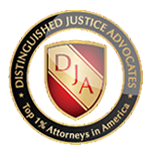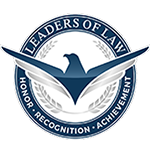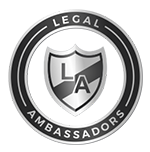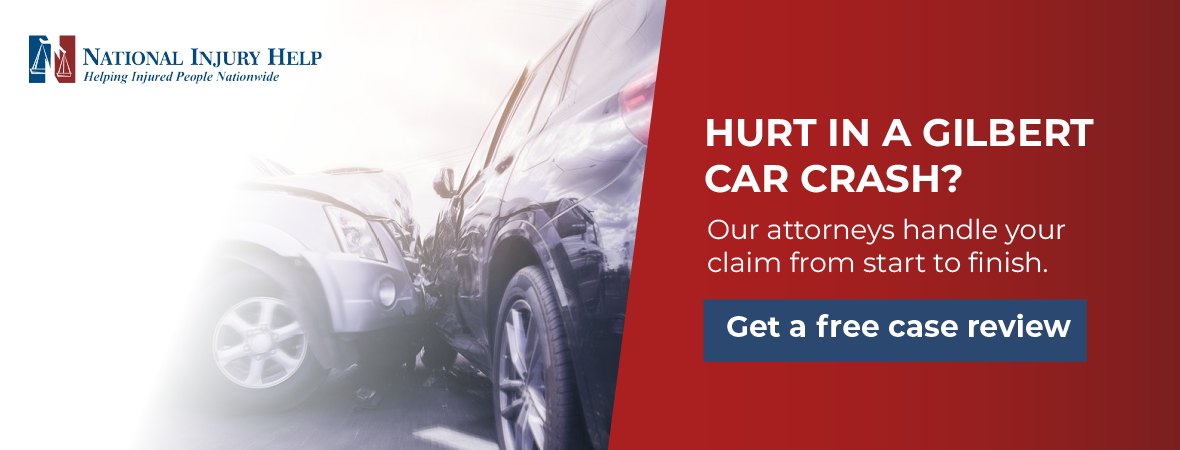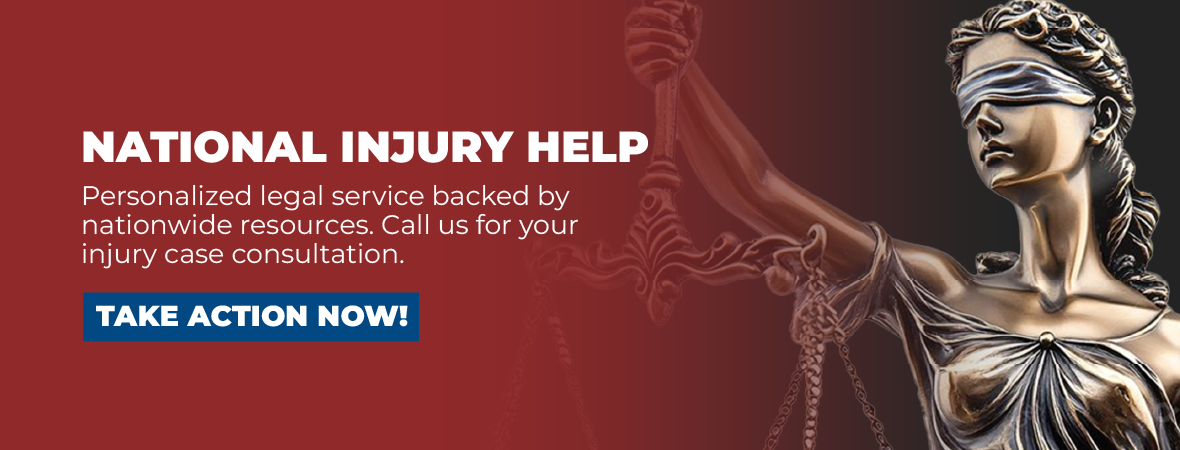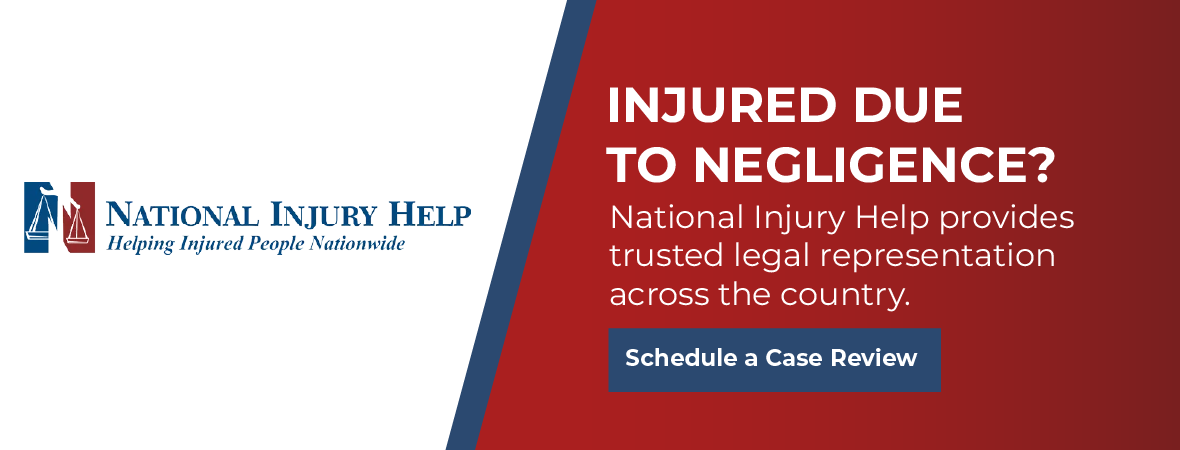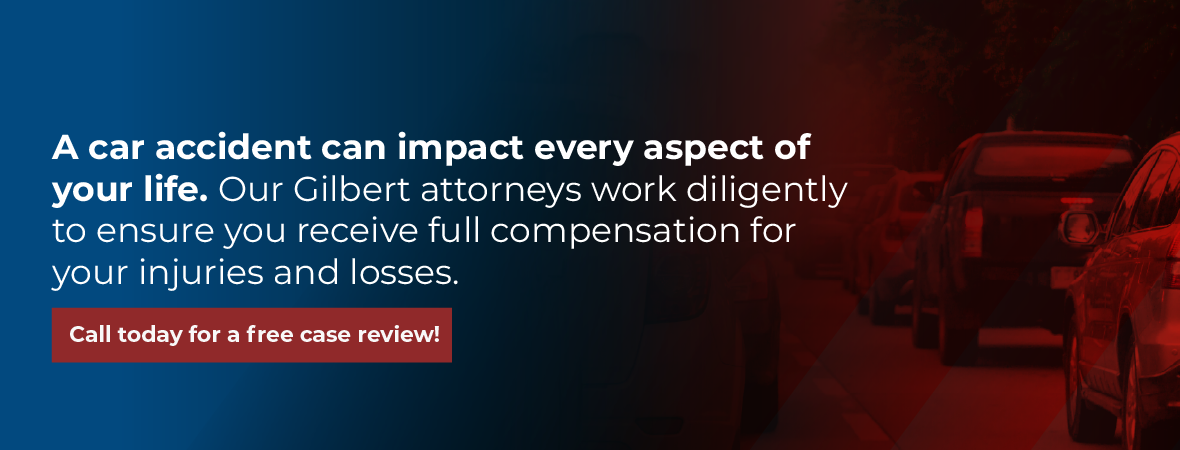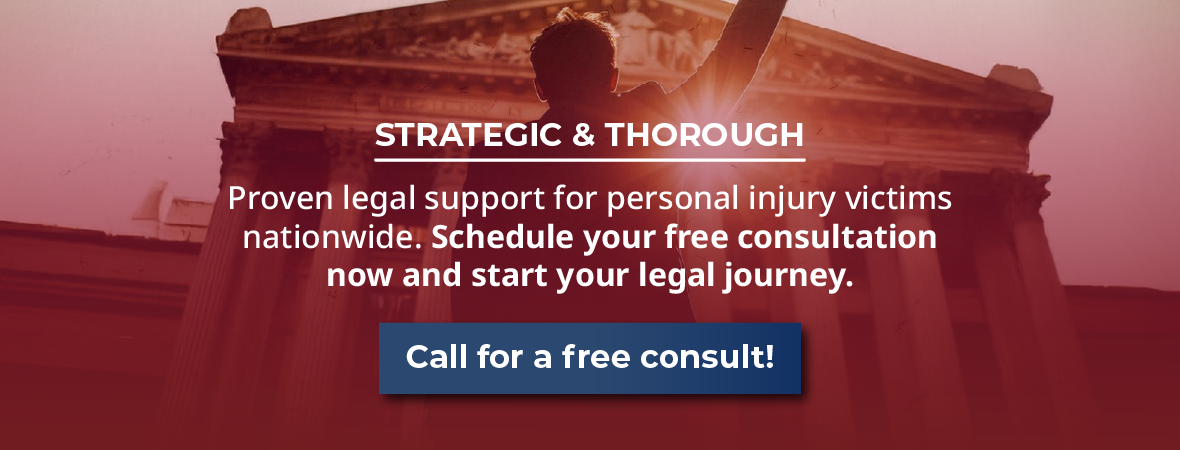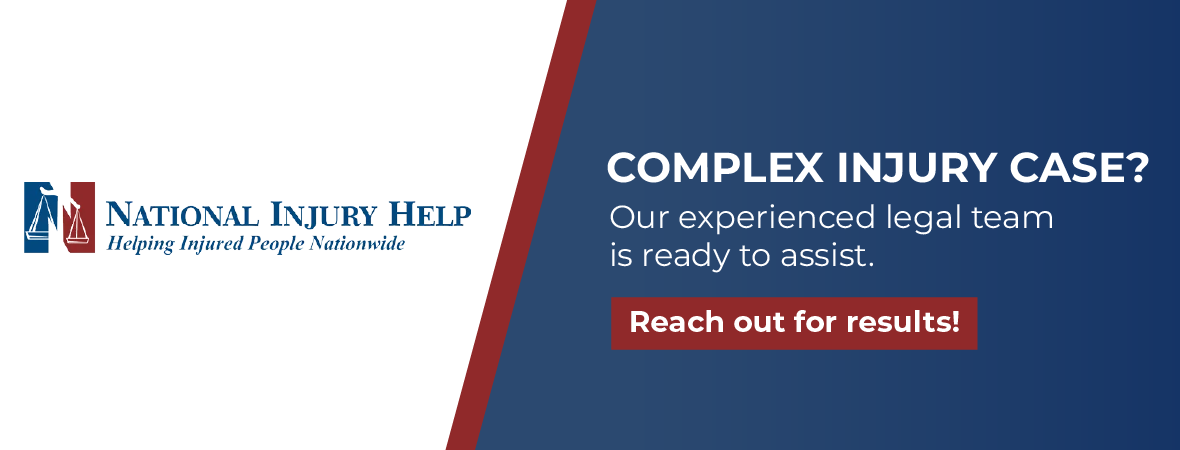A car accident in Gilbert can leave you hurt, overwhelmed, and unsure of what to do next. Contact our team at National Injury Help by calling 1 (800) 214-1010 today. We are here to protect your rights and support your recovery.
A crash happens in seconds, yet the stress can linger for months. We know how a sudden collision on Baseline Road or the US 60 can turn a normal day into a blur of sirens, pain, and paperwork. One minute you are thinking about groceries, and the next you are coping with ambulance rides, medical bills, and calls from insurance adjusters who seem to speak a different language.
Gilbert’s fast-growing population and constant construction make local roads busy from dawn to dusk. More drivers on the road mean more chances for rear-end taps at red lights, high-speed wipeouts on the freeway, and fender benders in store parking lots. Each accident leaves a trail of problems that feel bigger than any one person can handle. You may miss work, lose income, and wonder how to pay for therapy or a rental car.
That is where our team at National Injury Help steps in. When you hire a local auto accident lawyer in Gilbert from our team, you gain a guide who knows every shortcut and every pothole in the legal process. We put experience and people skills together so you can focus on healing while we focus on winning full compensation.
Common Causes of Car Accidents in Gilbert
Many crashes trace back to just a few risky habits. Knowing these habits helps you spot danger and shows why another driver may be at fault.
Distracted Driving
One of the leading causes of car accidents in Gilbert is distracted driving. This happens when drivers take their eyes, hands, or mind off the road. Even a quick distraction can cause a crash.
Some common distractions include:
- Phone use: Texting, scrolling, or taking a call can seem harmless, but just a two-second glance away from the road is enough to miss a stop sign or a child stepping into a crosswalk.
- GPS and navigation screens: Drivers often look down to check directions, especially in unfamiliar areas. That brief look can cause them to miss a car slowing down or a traffic light turning red.
- Eating or drinking: A fast food meal might seem like a time-saver, but when a drink spills or a wrapper gets stuck, drivers tend to react suddenly. That small moment of panic can cause them to swerve into another lane.
- Other passengers: Arguments, loud music, or children in the back seat can steal attention away from the road. Even turning to talk or grab something can break a driver’s focus.
Distracted driving is not always obvious, but it creates real danger. Most drivers know they should avoid it, but habits are hard to break. Unfortunately, this leads to many preventable accidents.
Speeding and Aggressive Driving
Speeding is another major cause of car crashes in Gilbert. Many roads in the city are long, flat, and straight. While that may seem safer, it often encourages drivers to go faster than the posted limit.
On highways like US 60 and Route 87, it is common for drivers to cruise at speeds above the limit. The faster you drive, the less time you have to react. A sudden stop or turn can become impossible to manage.
In city areas such as Guadalupe Road or Gilbert Road, traffic builds up during rush hour. That is when impatient drivers start tailgating, cutting people off, or switching lanes without signaling. These quick, aggressive moves turn minor errors into major accidents.
Even going just 10 miles per hour over the limit increases stopping distance and reduces the time to avoid danger. Aggressive driving, combined with heavy traffic, makes things worse.
Driving Under the Influence (DUI)
Drunk or drugged driving remains a serious risk on Gilbert’s roads. Alcohol, marijuana, and certain prescription drugs all affect how people drive.
- Alcohol slows reaction time and makes it harder to make smart decisions. Even one or two drinks can make a driver overconfident or drowsy.
- Marijuana may seem safer to some, but it can delay braking and affect coordination.
- Prescription medications, like painkillers or sleep aids, may come with warnings not to drive. When ignored, they create dangerous conditions.
Late-night and weekend accidents often involve DUI. Bars, restaurants, and house parties in the area mean many people hit the road when they should not. These crashes can be deadly, not just for the driver, but for passengers, other drivers, and pedestrians.
Failing to Yield or Stop
Gilbert has many busy intersections, and some drivers rush through them without stopping or yielding when they should.
- Rolling stops: Instead of coming to a full stop at stop signs, some drivers slow down but keep rolling. This is especially risky near schools or in neighborhoods where kids cross the street.
- Left turns at yellow lights: Many drivers try to “beat the light” by turning quickly during a yellow. But if they misjudge another car’s speed, a side-impact crash can happen in the middle of the intersection.
- Failure to yield to pedestrians: Drivers often fail to yield when turning right or left, especially when they are focused on other cars and forget to look for people in the crosswalk.
Intersections require full attention. One rushed decision can cause a serious crash.
Bad Weather and Poor Road Conditions
Gilbert drivers may not face snow or icy roads often, but weather and road conditions still play a role in many accidents.
- Rain makes roads slick, especially after long dry periods. Oil builds up on the surface, and when it rains, that oil rises and reduces traction. Drivers may lose control or hydroplane even at moderate speeds.
- Blinding sun during sunrise or sunset can block a driver’s view. When the sun hits just right, it becomes hard to see traffic lights, brake lights, or pedestrians.
- Potholes and uneven pavement are another danger. Swerving to avoid them or hitting them at high speed can lead to loss of control.
- Dust storms, while less common, can lower visibility in seconds. Drivers who do not slow down quickly may crash into other vehicles or roadside barriers.
Simple tools like sun visors, working wipers, and proper tires can help. However, many drivers do not prepare for these conditions until it is too late.
Types of Car Accidents and Their Consequences
Every crash pattern creates its own injuries and legal challenges. Learning the differences helps you explain what happened and why you were hurt.
Rear-End Collisions
Rear-end accidents are one of the most common types of crashes. They happen when one car hits another from behind. This may seem like a small bump, but even low-speed impacts can cause painful injuries.
What Often Happens:
- Whiplash is the most common injury. Your head snaps forward and backward suddenly, stretching the muscles and ligaments in your neck. You may not feel it right away, but the pain and stiffness often show up the next day.
- Back and shoulder injuries can also occur. You might have trouble lifting objects, reaching overhead, or even sitting comfortably for long periods.
- Headaches and dizziness may appear hours later, especially if your brain was jolted during the impact.
Even if there is little visible damage to the car, your body can still suffer. That is why it is important to get medical attention as soon as possible.
T-Bone Accidents (Side-Impact Crashes)
A T-bone crash happens when one vehicle hits the side of another, forming a “T” shape. These usually occur at intersections when one driver ignores a stop sign or runs a red light.
Common Injuries:
- Broken ribs and hip fractures are common because the side of a vehicle has less protection than the front or back.
- Internal injuries may occur when the force of the impact crushes the body or pushes it into the center console.
- Head injuries are possible if the person’s head hits the window or door frame.
Even with side airbags, these accidents often lead to serious injuries. The person sitting on the side that was hit usually takes the full force in the collision.
Head-On Collisions
Head-on crashes are the most dangerous type of car accident. They happen when the front ends of two vehicles hit each other, often while going at high speeds. These crashes are common on rural roads, highways, or areas without a clear divider between lanes.
What to Expect:
- Severe injuries or death can occur. The combined speed of two vehicles moving toward each other creates a massive amount of force.
- Broken bones, traumatic brain injuries, and spinal cord damage are common in head-on collisions.
- Survivors often need emergency surgery and months of rehabilitation.
These crashes can affect victims for the rest of their lives. They may lose the ability to work, walk, or live independently.
Sideswipes and Merging Accidents
Sideswipe accidents happen when two vehicles that are moving in the same direction make side-to-side contact. This often occurs when one driver fails to check their blind spot while changing lanes.
What Can Go Wrong:
- The side of your car may get scratched or dented, and side mirrors may be torn off.
- A light sideswipe may push your vehicle into another lane, a guardrail, or another car.
- Wheel alignment and suspension damage may not show up right away. Days later, your steering may feel off or your tires may wear unevenly.
Even though these accidents sometimes look minor, they can cause hidden damage and unexpected repair bills. They also create a risk of rollover if the vehicle is forced off the road.
Multi-Vehicle Pileups
Multi-car accidents involve three or more vehicles and often occur on busy highways or in stop-and-go traffic. These crashes are chaotic and confusing. A sudden slowdown, one distracted driver, or bad weather can set off a chain reaction of collisions.
Key Challenges:
- It is hard to figure out who is at fault. Several drivers may be partly to blame.
- Insurance companies may point fingers at each other to avoid paying.
- Injuries may come from multiple impacts, as your car gets hit from more than one side.
- The process of filing a claim can take longer because it involves multiple insurers, adjusters, and statements.
If you are involved in a pileup, document everything. Take photos, get witness contact information, and do not rely on just one police report.
What to Do After a Car Accident in Gilbert
Quick steps protect both your health and your legal rights. You do not need to memorize everything. Keep this list handy, and call us if you are unsure.
Call 911 and Get Medical Help
The first thing to do after any car crash is to make sure you and everyone else involved are safe. Call 911 right away, even if the accident seems small. The emergency operator can send police and paramedics to the scene.
Many people skip medical attention if they feel “okay” at the moment. But not all injuries show up right away. You might feel fine at first, only to wake up the next day with serious pain in your neck, back, or head. Internal injuries, concussions, and whiplash are common and may take hours to appear.
Paramedics will check your vital signs and make sure you’re stable. They also begin a medical record that links your injuries directly to the accident. That paperwork can be very important later when you file an insurance claim or a lawsuit.
File a Police Report
Once officers arrive at the scene, give them a clear and honest account of what happened. They will make a police report that includes important facts, such as:
- The location of the crash
- Time and date
- Weather and road conditions
- Statements from drivers, passengers, and witnesses
- Vehicle damage and positioning
This report becomes an official document that insurance companies often rely on when deciding who is at fault. It also helps prevent false claims by the other driver.
Even if the police cannot come to the scene, you should still report the accident to your local police department as soon as possible. Some states require this by law.
Exchange Insurance and Contact Information
You and the other driver should exchange:
- Names and phone numbers
- Driver’s license numbers
- License plate numbers
- Insurance company names and policy numbers
It is also very helpful to get contact information from anyone who saw the crash happen. Witnesses can make a big difference if the other driver tries to change their story later.
Try to stay calm and polite. Do not argue or place blame at the scene. Just stick to gathering the facts.
Document the Scene
Take clear photos or videos of the accident from several angles, as long as it is safe to do so. You should capture:
- The position of all vehicles involved
- Skid marks or broken glass
- Traffic lights or signs nearby
- Any visible injuries, bruises, or swelling
- Damage to your car and the other vehicles
If there are any unusual road conditions, such as potholes, construction zones, or poor lighting, make sure you photograph those too. Visual evidence like this can help prove what really happened and support your side of the story.
Write down what you remember while it’s still fresh. What direction were you heading? What color was the light? How fast were you going? These small details can be hard to remember later.
Avoid These Common Mistakes
What you do not do after an accident can be just as important as what you do. Here are some mistakes that could hurt your case:
Do not admit fault
You may feel tempted to apologize, even just to be polite. But saying “I’m sorry” can be taken as admitting guilt. Let the investigators and insurance adjusters determine fault. Just focus on getting help and reporting what happened.
Do not post about the accident online.
It might seem harmless to share photos or updates with your friends, but social media posts can be used against you. Insurance companies may twist your words or claim that smiling in a photo means you were not really hurt.
Do not talk to the other driver’s insurance company alone.
Soon after the accident, you might get a call from the other driver’s insurance adjuster. They may ask for a recorded statement or offer you a quick settlement. This is not in your best interest. Insurance companies are businesses, and their goal is to pay as little as possible. Let your lawyer handle all communication so you do not say anything that could weaken your case.
Gilbert Car Accident Lawyer Explains Arizona Car Accident Laws You Should Know
Here are some key Arizona car accident laws to keep in mind, as they could impact your case.
Arizona Is an At-Fault State
Arizona follows a “fault” system for car accidents. This means the driver who caused the accident is legally responsible for paying the damages. These damages may include medical bills, car repairs, lost wages, and pain and suffering.
To prove who was at fault, we look at many types of evidence, including:
- The police report from the accident scene
- Witness statements
- Traffic camera footage or dash cam video
- Photos of vehicle damage and injuries
- Skid marks, debris, or traffic signs at the scene
Insurance companies will also investigate, but they don’t always play fair. They may try to blame you or minimize your injuries. That’s why it’s important to gather as much evidence as possible and speak to a lawyer early on. Your legal team can help show that the other driver was responsible and fight for the full amount of money you need to recover.
Arizona Uses Comparative Negligence
In many car accidents, more than one person may be partly to blame. Maybe one driver was speeding, but the other was looking at their phone. Arizona uses a legal rule called “pure comparative negligence” to handle situations like this.
Here’s how it works:
- If you were 10 percent at fault for the crash, your total compensation would be reduced by 10 percent.
- So, if your damages total $100,000, you would still get $90,000.
Even if you were mostly at fault, like 70 or 80 percent, you can still recover the remaining percentage. However, the less blame you carry, the more you are likely to receive. That’s why it is so important to lower your share of the blame. A good attorney will work to show that the other driver was more responsible, which helps increase your payout.
There Are Deadlines to File a Claim
Arizona has a law called the statute of limitations. This is a deadline that tells you how long you have to file a personal injury lawsuit. For most car accident cases, you have two years from the date of the accident.
But if the accident involved a government agency, such as:
- A city bus
- A public school vehicle
- A poorly maintained road or traffic signal owned by the city or county
You only have 180 days to file a formal claim. That’s just six months. If you miss this deadline, the court will likely dismiss your case, and you will not be able to recover any money.
To protect yourself, don’t wait. The sooner you talk to a lawyer, the better your chances of building a strong case before time runs out.
Arizona’s Minimum Insurance Requirements
By law, all drivers in Arizona must carry a certain amount of auto insurance. These are called the minimum required coverage limits:
- $25,000 for bodily injury per person
- $50,000 for bodily injury per accident (if more than one person is hurt)
- $15,000 for property damage
While this may sound like a lot, serious accidents can lead to medical bills that go far beyond these limits. If multiple people are injured, or if someone needs surgery, hospital stays, or physical therapy, these minimum policies may not come close to covering the full costs.
Fortunately, there are ways to find additional coverage. A skilled lawyer may uncover:
- Umbrella insurance policies, which offer extra coverage above the basic limits
- Employer insurance, if the driver was working at the time of the crash
- Underinsured motorist coverage, from your insurance policy, which kicks in when the at-fault driver’s coverage is too low
Having the right attorney on your side can make all the difference in finding these hidden sources of compensation.
Gilbert Car Accident Lawyer Explains Who May Be Liable in a Gilbert Car Accident
Liability can stretch beyond the person behind the wheel. We explore every option to maximize your recovery.
The Other Driver
Most claims start here. Evidence shows speed, distraction, or impairment.
Commercial Vehicle Owners or Employers
Delivery vans, rideshares, and service trucks often carry larger insurance. If the driver was on the clock, the company can pay.
Vehicle Manufacturers
Faulty airbags, brake failures, or exploding tires point to design or build errors. Product-defect claims hold manufacturers accountable.
Government Entities
Potholes, broken lights, or unclear lane markings make roads unsafe. Special rules and shorter deadlines apply, so we act fast.
Shared Liability
One crash can involve multiple cars, a city crew, and a parts maker. We assign percentages so each party pays a fair share.
How a Gilbert Car Accident Lawyer Can Help You
Dealing with a car accident can feel like an uphill battle. There are so many moving parts, doctor visits, car repairs, time off work, and insurance calls, that it quickly becomes overwhelming. Trying to handle everything by yourself is not only stressful, but it can also hurt your chances of getting the compensation you deserve.
That is where a Gilbert car accident lawyer comes in. Our job is to take the legal weight off your shoulders so you can focus on getting better. We bring experience, resources, and a deep understanding of how to deal with insurance companies and court systems. Here is how we help every step of the way.
Offer a Free Consultation and Case Evaluation
It all starts with a simple conversation. You bring us your worries, your medical records, and any photos or documents you have. We take the time to listen carefully and ask the right questions. Then, we explain your legal options.
During this first meeting, we also estimate what your case might be worth. This includes looking at your medical bills, lost wages, and how the crash has affected your daily life. You walk away with a clear picture of what comes next, and you owe us nothing unless we win.
Gather and Preserve Evidence
Strong cases are built on strong evidence. The sooner we start, the more we can collect before it disappears. We pull official police reports, download dashcam or traffic camera footage, take photos of the crash site, and contact any eyewitnesses. We also work with experts to preserve damaged car parts or reconstruct the accident if needed.
This information helps prove what happened, who was at fault, and how serious your injuries are. Insurance companies often try to twist the story, but solid evidence keeps the truth front and center.
Negotiate With Insurance Companies
Insurance companies are not on your side. Their goal is to save money by paying out as little as possible. They may delay your claim, question your injuries, or offer you a settlement that does not come close to covering your losses.
We step in and deal with the insurance adjusters directly. We present the facts, the evidence, and the law to support your claim. Our goal is to get a settlement that fully covers your medical costs, lost income, car repairs, pain, and emotional distress. If the insurance company does not offer a fair deal, we are ready to take the next step.
Estimate Your Full Damages
Many people focus only on what they have already lost, like a hospital bill or a missed paycheck. However, a fair settlement also includes future costs. This may include:
- Ongoing physical therapy
- Surgery or long-term care
- Lost promotions or career changes
- Emotional suffering or trauma
We work with medical and financial experts to calculate the full impact of the accident. That way, you do not settle for less than you will actually need.
Represent You in Court If Necessary
Most car accident claims settle out of court. But sometimes the only way to get fair compensation is to file a lawsuit. If that happens, we will take your case to the Maricopa County Superior Court.
We handle every step, including filing documents, gathering more evidence during discovery, attending mediation, and going to trial if needed. Throughout the process, we keep you informed and involved, so you always know what is happening and why.
Types of Compensation You May Be Entitled To
Money cannot erase trauma, yet it pays for recovery and protects your future.
Medical Expenses
Emergency transport, hospital stays, surgery, therapy, and prescription costs add up fast.
Lost Wages
Missed paychecks hurt families. Future earning potential matters if injuries limit career choices.
Property Damage
Your car, phone, laptop, and child car seats can all be part of the claim.
Pain and Suffering
Chronic pain, sleep problems, anxiety, and depression deserve recognition in dollars.
Punitive Damages
Arizona courts sometimes award extra money when a driver shows extreme recklessness, such as drunk driving at twice the legal limit.
Why Choose a Gilbert-Based Car Accident Attorney
Local roots bring real benefits.
Familiar With Gilbert’s Traffic and Roads
We drive the same streets you do. We know trouble spots downtown, the tricky merges near Gilbert Road, and the blind curves on Ellsworth.
Local Legal Experience
Our team files regularly in Maricopa County courts. We know the clerks, the judges, and the best way to schedule hearings.
Accessible, Personal Legal Support
You can meet us face-to-face, drop off documents, or call for quick updates. Local access speeds progress and ease your mind.
FAQs About Car Accident Claims in Gilbert
What if I was not wearing a seatbelt?
Even if you weren’t wearing a seatbelt, you can still recover funds. The insurer may argue you share blame, yet Arizona’s comparative rule still allows partial recovery.
Can I get compensation if I was partly at fault?
Yes, you can still get compensation even if you were partly at fault. Your award is reduced by your percentage of fault, but it does not disappear.
Do I need to speak with the other driver’s insurance company?
No, there is no specific need for communication with the other driver’s insurance company. Direct them to us. Anything you say can be used to shrink your payout.
How long does a claim take to settle?
Simple cases can wrap up in a few months. Complex injuries or multiple defendants may take a year or more. We move steadily and keep you posted.
What if the driver was uninsured or underinsured?
If the other driver was uninsured or underinsured, we tap your own uninsured-motorist policy and search for assets or employer policies that may apply.
Contact a Gilbert Car Accident Lawyer Today
After a car accident, time is important. Skid marks disappear, memories fade, and legal deadlines get closer every day. The sooner you get help, the better your chances of building a strong case.
At National Injury Help, we support car accident victims in Gilbert, Mesa, Tempe, Chandler, Apache Junction, and throughout the East Valley. Your first consultation is completely free, and you don’t pay us anything unless we win your case.
If you were hurt in a crash, don’t try to handle the insurance company on your own. We are here to protect your rights and fight for the full compensation you deserve. Call 1 (800) 214-1010 today to speak to a car crash attorney in Gilbert, and let us stand by your side.

